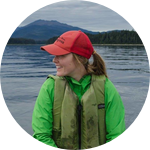About This Project
Baseline indices for steroid hormone levels in humpback whales do not exist, and current monitoring techniques are invasive. Hormones can advise in management, and help in understanding climate change related population shifts. We want to test if whale snot is reliable in collecting sufficient data without disturbing them. By analyzing hormone levels in both blubber and snot, we can establish hormone level baselines from blubber, and see whether less invasive snot-collecting is just as telling.
Ask the Scientists
Join The DiscussionWhat is the context of this research?
Understanding baseline physiology of animals is one way in which we can assess health. By looking at steroid hormones we can understand metrics like stress and reproductive capacity. These tools help to determine why a population is thriving or failing. In a climate of rapid change, it is even more imperative to understand what 'normal' is in these animals. This baseline can then be used to evaluate if management strategies are necessary to protect failing populations (More on hormones).
In addition to understanding baselines, it is important to disturb wild animals as little as possible. By looking at different ways in which steroid hormones can be collected (like whale snot), we can find an option which is minimally invasive, while still collecting invaluable information.
What is the significance of this project?
Scientists can never have enough tools when working on a question. Our world is a rapidly evolving, technology ridden place. Scientists must also evolve and adapt to all options available to them. Drones are a huge buzz technology at the moment and have many potential outlets for research. While it has been proven that drones are able to collect whale snot and that it contains traceable amounts of steroid hormones, we do not know if there is a usable amount. By comparing hormone levels in blubber (the current industry standard for assessing hormones) to whale snot, we can see if a similar story is told.
What are the goals of the project?
I have two goals in my research: To determine if whale snot is a viable medium in steroid hormone analysis and to quantify a baseline level of testosterone and cortisol in humpback whale males. For objective one, I have and will continue to collect whale snot (see video) and blubber biopsies from humpback whales. I need both samples, collected in the same time frame, from each whale. For objective two, I am fortunate enough to have access to archived blubber samples. I have currently analyzed 107 humpback whale males and have 200 more to go. I have also collected my own blubber samples in order to create a look at hormones across time. For both objectives, samples are brought back to the lab where they are analyzed for concentrations of specific types of hormones (How?).
Budget
In order to assess the physiology of cetaceans, we first need to obtain samples. I have been fortune enough to have wonderful Alaskan scientists donate their time, boats, and field equipment in the pursuit of these samples. Funds are not requested for field costs from this source.
After collection, samples need to be analyzed in the lab. In order to determine the concentration of hormones in a sample, the hormones first need to be extracted (How?). Once they are extracted utilizing a slew of chemicals and many steps, they need to be run using ELISA kits. These kits are essential to the project aims and are not cheap. Each kit runs at $340 and can process 30 samples for one hormone. To create baselines for testosterone and cortisol, I will need to run 300 samples twice (once for testosterone and once for cortisol). I will need 20 kits to process these samples or $6800 in funding.
Endorsed by
Meet the Team
Kelly Cates
I was born and raised in the PNW and have never wanted to live anywhere else. After earning my BS in marine biology from Western Washington in 2012, I took a job in Australia studying dolphins. To make a 6 month story short, I fell in love with marine mammal research. As someone who covets learning and who has trouble sitting at a desk (I have a jerry rigged cardboard stand up desk), marine mammal research allows me time in the outdoors, interacting with animals that are both majestic and more complex than we could ever have imagined.
Moving to Alaska from Washington state was an easy choice for me. The mountains are bigger, the outdoors more rugged, and the research more challenging. As a former collegiate soccer player, I am always looking to push myself, and Alaska seemed like an ideal place to test my boundaries.
If you have ever seen a humpback whale, it is not hard to see why I decided to study these creatures. My choice was only reinforced by the lack in physiological information on these animals. Thus in the fall of 2014, I embarked on a M.S. degree through the University of Alaska-Fairbanks, under the leadership of Dr. Shannon Atkinson.
I am excited by what this new year has in store. With 200 more archived samples to analyze I will be busy in the lab (and I can catch up on the podcast Serial season 2). I will also get to spend more time in the field, utilizing my crossbow skills to obtain biopsy samples, my photography skills for photo ID's, and getting a fantastic arm workout waving my 21 ft carbon fiber pole around to collect whale snot.
Thank you so much for taking the time to view my webpage. It means a lot that the general community is engaged and cares about the wonderful creatures that share our planet. Whether or not you choose to donate is your choice. I am simply happy to let others know what I am researching and hopefully to strike a spark in others to encourage a world where environmental stewardship is the norm.
Please share my webpage!
Project Backers
- 244Backers
- 100%Funded
- $5,000Total Donations
- $20.49Average Donation

